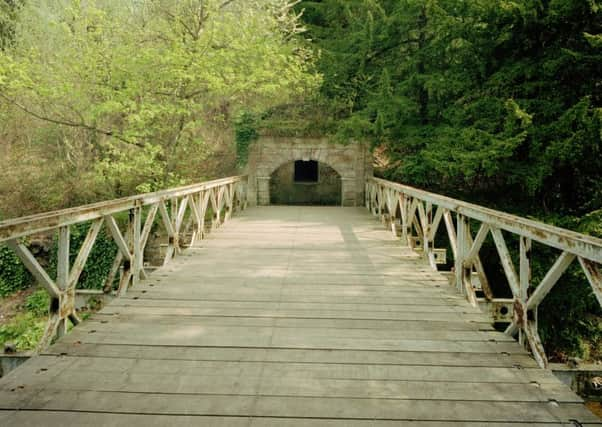Midlothian's 100 Objects - Newbattle ice house and bridge


The grotto is decorated by fluted pilasters and key stone, and a dentilled frieze carved with emblems and initials.
The grotto hides the entrance to an ice house with an egg-shaped pit. This would be filled with ice in winter and used for storing meat and other perishables.
Advertisement
Hide AdAdvertisement
Hide AdThe trestle-style girder bridge has open cross-braced parapets to protect people using the ice house and grotto.
Wooden decking is laid over the iron framework to create a roadway for carts to approach the ice house to collect foodstuffs stored within.
Newbattle Abbey, south of Dalkeith, was founded by Cistercian monks in 1140, and its church dedicated to St Mary in 1233-4.
It became a private residence in 1587 when the last abbot, Mark Kerr, converted to Protestantism and was able to retain his lands. His son became Lord Newbattle in 1596.
Advertisement
Hide AdAdvertisement
Hide AdThe remains of the abbey are built into the surviving house, which was modified and rebuilt by the architects John Mylne (1650), William Burn (1836) and David Bryce (1858).
The house was gifted to the nation in 1937 to be used as a further education college.
Photo: Royal Commission on the Ancient and Historical Monuments of Scotland/Scran
We’d love to feature your favourite Midlothian object.
You can email a photo and details to [email protected]